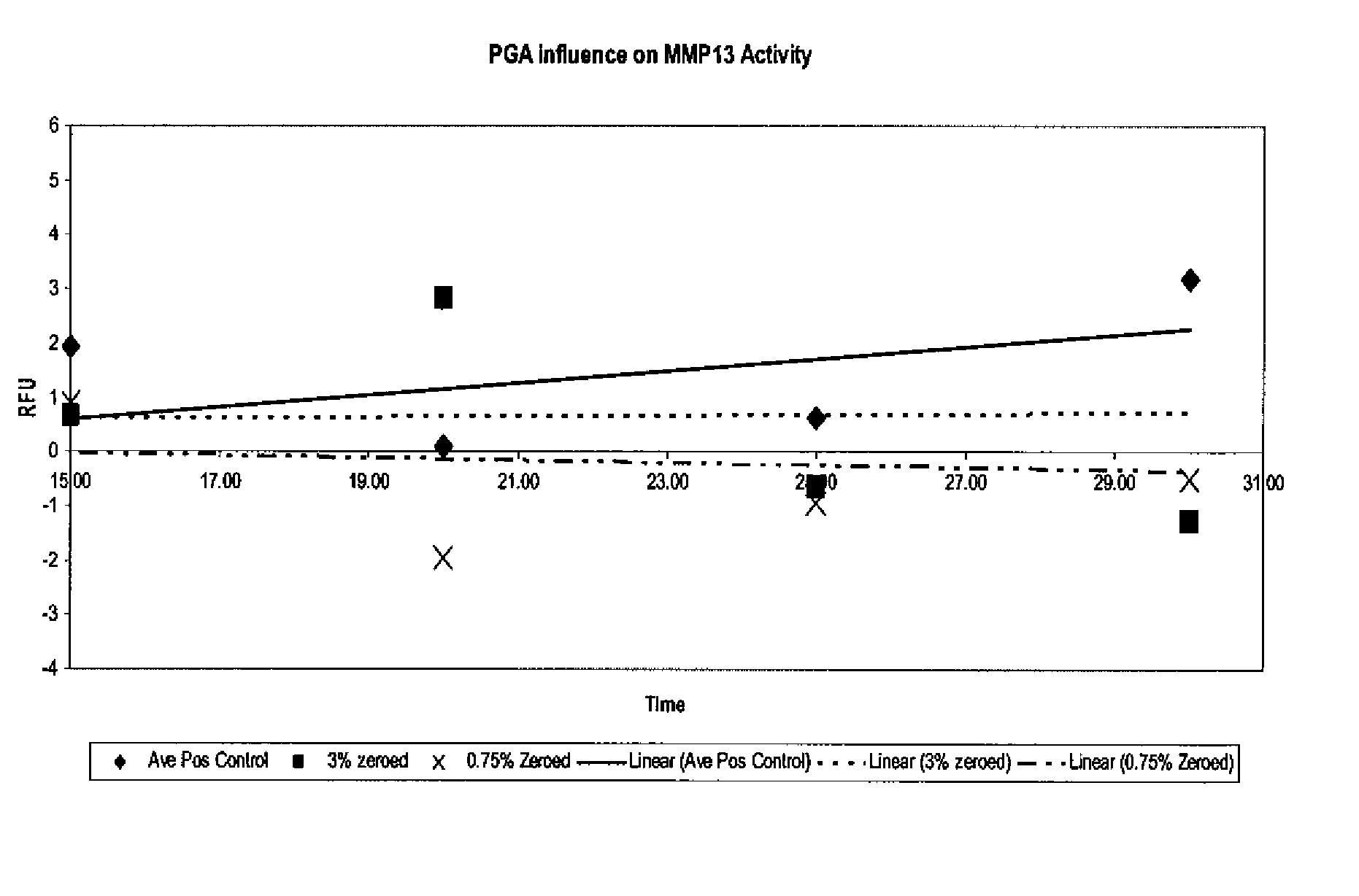Methods for Treating Joint Pain Using Poly-Gamma-Glutamic Acid
- Summary
- Abstract
- Description
- Claims
- Application Information
AI Technical Summary
Benefits of technology
Problems solved by technology
Method used
Image
Examples
example 1
PGGA Using Preferred Fermentation Method, and Purification to Medical Grade
[0022] Bacillus licheniformis ATCC 9945a was grown in Medium E. The fermentation was carried out at small scale, in shake flasks, at 37 C. Aeration was provided by diffusion. When the viscosity stopped rising (typically after about 3-5 days of fermentation), the fermentation broth was buffer exchanged via diafiltration using a filter with a molecular weight cut off (MWCO) of 30 kDa. The mixture of cells and PGGA was then buffered in citric acid, and micro-filtered using a filter with an opening of 0.22 microns, to remove the host cells.
[0023] The filtrate was neutralized, and buffer exchanged with pure water and concentrated via diafiltration using a filter with a MWCO of 30 kDa. Material from this purification may be sterile filtered.
[0024] To describe the process in more detail, when the viscosity stopped rising, the fermentation broth was re-circulated through an Omega Polyethersulfon ultra-filtration c...
example 2
PGGA from Another Commercial Source Purified
[0027] A sample reported to be poly-gamma-glutamic acid in excess of 1 million Daltons was received from an offshore commercial supplier. The viscosity of a sample of known concentration seemed to be lower than would be the case if the PGGA was indeed of the reported molecular weight. Analysis was impossible due to the large amount of contaminants, as evidenced by the off-white color noted when the sample was hydrated, and the fact that the hydrated sample had an odor similar to fermentation broth.
[0028] This material was re-circulated through an Omega Polyethersulfon ultra-filtration cartridge by Pall Corporation with a 0.2 micron pore size. Once collected, the filtrate was re-circulated using an Omega Polyethersulfon ultra-filtration cartridge by Pall Corporation with a 0.16 micron pore size. The filtrate was collected and re-circulated through an Omega Polyethersulfon ultra-filtration cartridge by Pall Corporation with a 30 kda MWCO p...
example 3
PGGA
[0029] Bacillus licheniformis ATCC 9945a was grown in Medium E. The fermentation was carried out at small scale, in shake flasks, at 37 C. Aeration was provided by diffusion. When the viscosity stopped rising, the fermentation broth was buffer exchanged via diafiltration using a filter with a molecular weight cut off (MWCO) of 30 kDa. The mixture of cells and PGGA was then buffered in citric acid, and micro-filtered using a filter with an opening of 0.16 microns.
[0030] The filtrate was neutralized, and buffer exchanged with pure water and concentrated via diafiltration using a filter with a MWCO of 30 kDa. Material from this purification may be sterile filtered. Material from this example has been used in rats in subsequent experiments with no inflammatory response. The molecular weight was determined to be 2 million Daltons using the method described above in conjunction with example 1.
PUM
| Property | Measurement | Unit |
|---|---|---|
| Mass | aaaaa | aaaaa |
| Mass | aaaaa | aaaaa |
| Molecular weight | aaaaa | aaaaa |
Abstract
Description
Claims
Application Information
 Login to View More
Login to View More - R&D
- Intellectual Property
- Life Sciences
- Materials
- Tech Scout
- Unparalleled Data Quality
- Higher Quality Content
- 60% Fewer Hallucinations
Browse by: Latest US Patents, China's latest patents, Technical Efficacy Thesaurus, Application Domain, Technology Topic, Popular Technical Reports.
© 2025 PatSnap. All rights reserved.Legal|Privacy policy|Modern Slavery Act Transparency Statement|Sitemap|About US| Contact US: help@patsnap.com

